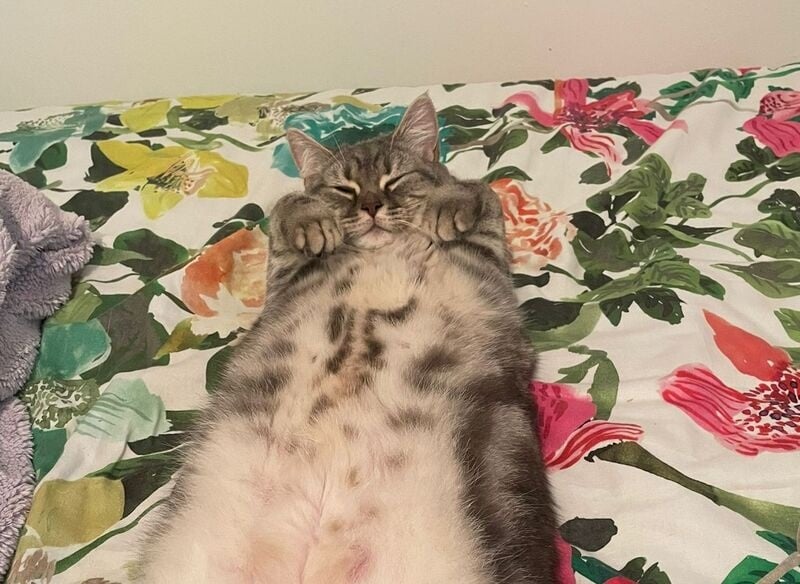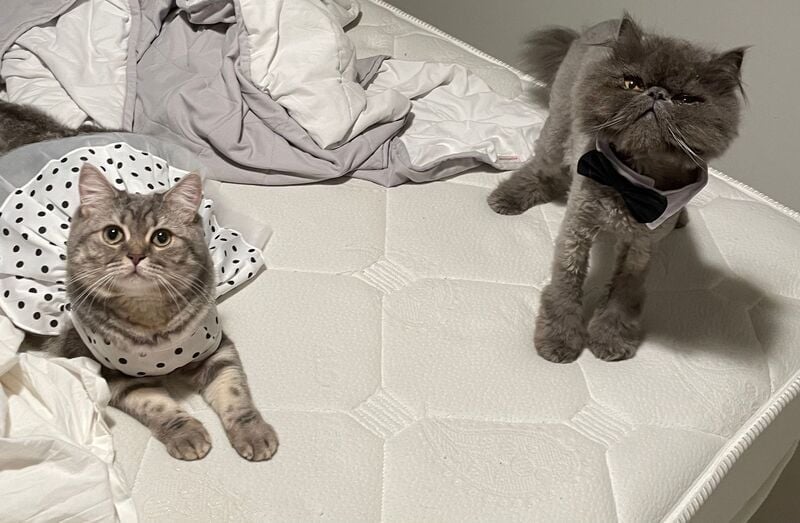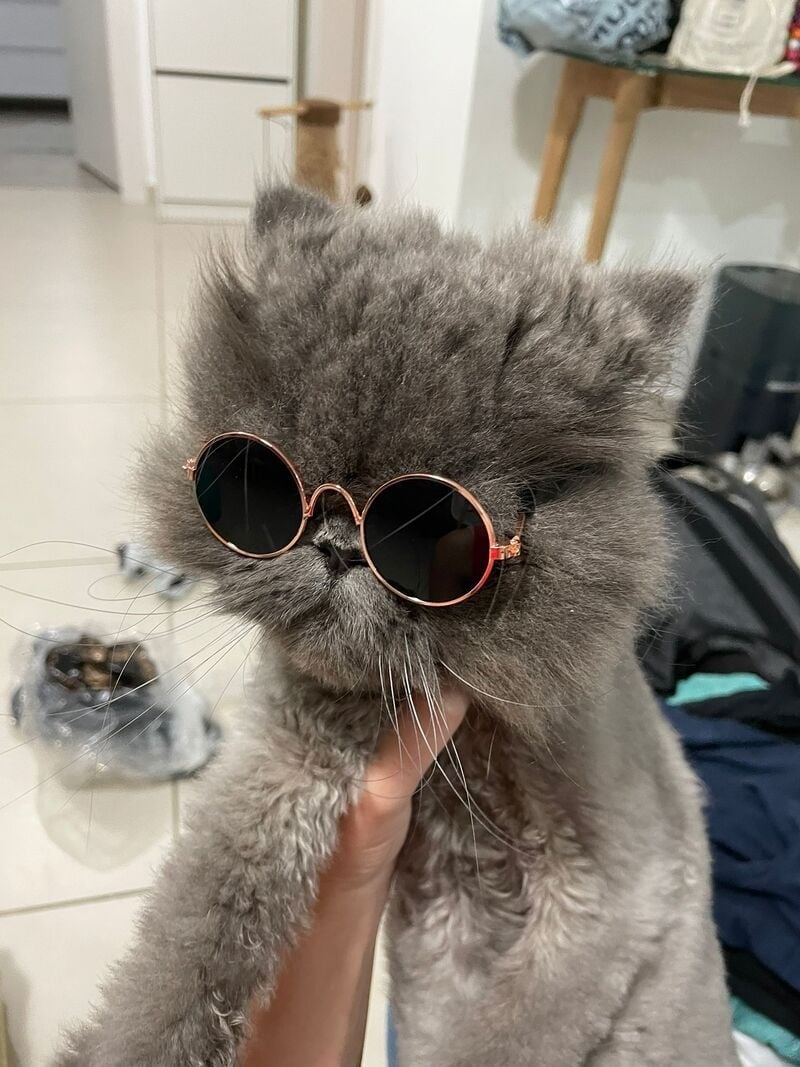Understanding Your Cat's Tells
 Image by Reddit
Image by Reddit
Sometimes it’s hard to read your cat, so it comes as no surprise that you may wonder at times what your feline friend is thinking. To understand your cat’s wants and needs you must understand their body language, most specifically how their tails move, and how their eyes and ears interact with you and the world. If you can understand the motivations behind these movements and what they indicate then you are one step closer to truly understanding your furry friend.
Cat Tail Positions
Your cat’s various tail positions are a big part of how they show their emotions. Through a cat’s tail movements you can determine how happy or content your cat is or how much they aren’t. Firstly, how a cat positions their tail can reveal a lot about how they feel. If your cat’s tail is high, then it can indicate how confident and pleased they are feeling at that given moment. If their tail continues to switch while high it can indicate even more happiness at the moment.
Curved Cat Tails
If your cat’s tail is curved in the shape of a question mark it could indicate that your cat is ready to play with you and is up for some fun activities.
Low Cat Tails
If your cat’s tail hangs low then it can indicate destress or being agitated. Usually, if a cat’s tail is lower than usual it is almost a sure sign that your cat is feeling aggressive at the moment and it’s better to stay away from them until they cool off. However, it is important to be aware of what kind of cat you have as is some cats naturally have low-hanging tails.
Tucked Cat Tails
If your cat’s tail is tucked under them then it can signify fear or stress. Something may be causing your cat to feel uneasy. It is important to take a look at your cat's surroundings to try and determine what is making them feel this way. Are there lots of people in the area? Are their new people around that your cat isn’t used to? These are only some of the reasons that can cause such a reaction.
Puffed Cat Tails
If your cat’s tail is puffed up in a coiled motion it could indicate that your cat is even more frightened and that they are attempting to appear larger than they are to avoid being threatened.
Whipped Cat Tails
If your cat’s tail is whipping back and forth in swift motion this can signify that they are severely angry and on edge so it is best to keep your distance from them until further notice.
Swishing Cat Tails
On the contrary to tail whipping, tail swishing, simply means that your cat is completely enthralled and focused on an object that has their undivided attention.
Wrapped Cat Tails
If your cat wraps their tail on another cat it is a form of endearment. This means that your cat feels particularly close to another cat and that they have a strong friendship. It’s almost like the cat version of a hug.
Cat Ears
A Cat’s ears also play a big role in determining your cat’s temperament. Having relaxed ears is the most organic position for your cat.
Cat Ear Twitches
If your cat’s ears twitch it is usually in response to noise that has triggered them in some way. If your cat’s ears are up then it is an indication of playfulness.
Cat Ear Flickers
If they are worried or concerned about something their ears may flicker back and forth.
Playful Cat Eyes
Your cat’s pupils when relaxed will remain their normal size and undergo no extreme change. However, when your cat is at their most playful state their pupils may dilate.
Fearful Cat Eyes
If a cat is fearful of something their eyes both dilate and appear more open.
There are several additional indicators you should keep in mind that go beyond your cat’s eyes, ears, and tails. to better understand your cat looking out for these indications can be very beneficial to better understanding your cat. Below you can find some additional markers to keep in mind.
Cat Rubbing
Does your cat rub against objects or people? Usually, if a cat is rubbing against something or someone they are particularly fond of them. It can also be a way to mark their territory so other cats stay away.
Cat Kneading
Certain types of cats may also flex their paws which is called kneading, this upward, downward motion can indicate a type of comfort.
Meowing
If you hear your cat meow it is a sure sign that your cat is trying to get your attention or that they want something from you since cats only do this to humans and not to communicate with each other.
All in all, understanding your cat is an ongoing process so it is important to constantly be aware of your cat’s typical body language tendencies. If your cat strays away from their normal in an extreme way it could indicate a form of illness and then it is best to consult with your vet right away.
Related posts

Only Geography Buffs Would Know How These Cities Got Their Nicknames
Culture being what it is, we're all armed with the knowledge of some of the world's most famous cities' nicknames. The real question, though, is how they came to receive these alternative names? Was N

5 Countries All History Lovers Must Visit
5 Countries All History Lovers Must Visit


